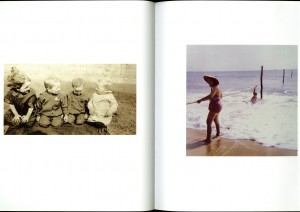 As you probably learned eight hundred times in the past week, Facebook, in a typically voracious snatch for power, just purchased fledgling start-up Instagram for $1 billion. Its 13 employees (you do the math) built the social platform for sharing photos that the user can “filter” before they are posted. Each filter allows the particular “look and feel” of different kinds of film, faded or enhanced in various ways, with different lens types to choose from. Instagram delivers the look of old photographs, the convenience of digital photography on our mobile phones, and the addiction of online sharing. It sits, grinning stupidly, somewhere between cool and mainstream, between hip and totally lame. It’s bizarre — and it’s really, really popular.
As you probably learned eight hundred times in the past week, Facebook, in a typically voracious snatch for power, just purchased fledgling start-up Instagram for $1 billion. Its 13 employees (you do the math) built the social platform for sharing photos that the user can “filter” before they are posted. Each filter allows the particular “look and feel” of different kinds of film, faded or enhanced in various ways, with different lens types to choose from. Instagram delivers the look of old photographs, the convenience of digital photography on our mobile phones, and the addiction of online sharing. It sits, grinning stupidly, somewhere between cool and mainstream, between hip and totally lame. It’s bizarre — and it’s really, really popular.
What about filtering our digital photographs to make them look like their analog forefathers is cool? Why did this idea catch on so quickly and successfully? It reminds me of Tacita Dean, one of my favorite artists, whose book Floh is a collection of photographs she found at flea markets across Europe and the U.S. The photographs are anonymous and amateur, but beautiful and poignant. Most of them have the patina of age: they are discolored, faded, cracked, or somehow marked in a way that reminds us of their materiality. They are snapshots-turned-art. What is so powerful about this book — and what gives it its “cool factor” — is the feeling that we’ve just stumbled across these beautiful images; that we are the first to know their stories. That art can be found in the most unremarkable places, if you have a discerning eye. That artists are everywhere.
Instagram more or less mimics the qualities we find in Floh. Its filter features allow for instant memory-making. On Facebook — especially with the inevitable Timeline — we are constantly curating our own life story. Instagram enhances the narratives we weave by mimicking the materiality and randomness of old photographs. The hike you took, the latte you drank, the sunset you saw, that day at the park with your friends — these events become subtle markers for the kind of life you lead. Instagram isn’t just about sharing photos or networking: it’s about starring in your own movie. It’s about making sure your life looks beautiful, and not leaving it up to chance.
Recently I visited my grandmother’s home, where she has lived since 1957 and raised five children. She is slowly succumbing to liver disease, and her children take turns traveling from all over Northern California to her home to take care of her. One of my aunts, while on her watch, has been going through boxes and bags and drawers of photographs and sorting them into paper bags marked with each sibling’s name. On my last visit, my mother and I went through her bag, reaching into it and pulling out fistfuls of crumpled and faded photographs. My mom, wearing a white polyester jumpsuit, dancing with her best friend in front of a Christmas tree that’s faded to cyan and gray. My mom as a little girl on the shore of a lake, holding out a handful of sand and rocks, in black-and-white. My dad, thinner, with a mustache, out of focus and ripped at the corner. I laid them out in good light and took a picture of each of them with my phone. 50 years from now, or 100, or 200 — who will be able to tell the difference?
This post may contain affiliate links.








